Training Stubborn Dogs: Proven Methods That Work
Transparency matters to us! This post may include affiliate links, which means we earn a small commission if you make a purchase through our recommendations. This is at no additional cost to you. Read our full affiliate disclosure.
Have you ever watched your dog perfectly execute a “sit” command for a treat, then completely ignore you five minutes later when you ask for the same behavior? You’re not alone in wondering if your intelligent companion is deliberately choosing when to listen. Many dog owners find themselves frustrated when their seemingly smart dogs appear to selectively follow commands, leading to the assumption that they’re dealing with a “stubborn” pet. However, what we often label as stubbornness is actually confusion, lack of motivation, or environmental distractions rather than willful defiance. The most successful approach involves shifting from viewing dogs as rebellious to understanding that effective training requires adapting methods to each dog’s individual needs, motivations, and communication style. When you reframe “stubbornness” as an opportunity for smarter, more empathetic training, you’ll often discover that your dog has been trying to communicate with you all along.
Key Takeaways
- “Stubborn” is Often Misunderstood: Many dogs labeled as stubborn are actually confused, unmotivated, distracted, or responding to unclear communication
- Genetics Influence Training Style: Certain breeds appear more independent due to their genetic purpose, not because they’re more defiant
- Positive Reinforcement Outperforms Punishment: Reward-based methods build trust and engagement while punishment creates anxiety and avoidance
- Motivation Must Match the Dog: Individual dogs respond to different rewards—treats, toys, praise, or play—requiring personalized approaches
- Environmental Factors Matter: Stress, distractions, and training context significantly impact a dog’s ability to learn and comply
- Consistency and Clarity Are Essential: Mixed signals and inconsistent expectations create confusion that appears as stubbornness
Redefining “Stubborn”: Understanding What’s Really Happening
The term “stubborn” might be one of the most misused words in dog training. When we apply human concepts of defiance to our canine companions, we miss the real reasons behind their behavior. Dogs don’t wake up planning to frustrate their owners or deliberately ignore commands out of spite. Instead, dogs make decisions based on consequences, environmental factors, and past experiences rather than deliberate defiance. Understanding this fundamental difference can transform your training approach and relationship with your dog.
The Science Behind Canine Decision-Making
Dogs operate on a simple principle: they repeat behaviors that work for them and avoid behaviors that don’t. When a dog appears to ignore a command, they’re often weighing their options based on previous outcomes and current motivations. For example, if coming when called has previously led to ending a fun play session, your dog might hesitate the next time you call. They’re not being defiant; they’re making a logical choice based on their experience.
The canine brain processes information differently than ours. While humans can understand abstract concepts like obedience for its own sake, dogs need concrete reasons to perform behaviors. They respond to immediate consequences and clear associations between actions and outcomes. When we understand this, we can structure training to work with their natural learning patterns rather than against them.

Common Misinterpretations of Dog Behavior
What looks like stubbornness often falls into several categories. Confusion happens when dogs haven’t fully learned a command or when the cue has been muddied by inconsistent training. A dog might sit reliably in the kitchen but ignore the same command in the park because they haven’t learned to generalize the behavior across different environments.
Lack of motivation is another common issue. If your reward isn’t valuable enough to compete with environmental distractions, your dog may appear to ignore you. The squirrel running across the yard might be far more interesting than the treat in your pocket. This isn’t disobedience; it’s simply a matter of competing interests.
Distraction and overstimulation can also masquerade as stubbornness. When dogs are stressed or highly distracted, the thinking part of their brain is impaired, making learning and response to commands difficult. A dog who obeys perfectly at home might seem completely different in a busy park setting.
When “Disobedience” Indicates Underlying Issues
Sometimes apparent stubbornness signals deeper problems that require attention. Pain can cause a dog to refuse certain commands, especially those involving movement. A dog who suddenly stops responding to “down” commands might be experiencing joint discomfort. Similarly, fear or anxiety can cause a dog to shut down or become unresponsive to familiar cues.
Negative associations with specific commands can also create apparent disobedience. If a dog has learned that “come” means the end of freedom or leads to unpleasant experiences, they may develop selective hearing. Recognizing these underlying issues allows you to address the root cause rather than fighting the symptoms.
Breed-Specific Independence: Genetics vs. Defiance
Not all dogs were bred to hang on their owner’s every word. Many breeds were developed to work independently, making decisions without human guidance. Terriers, scenthounds, sighthounds, and livestock guardian breeds may appear more stubborn due to their genetic programming for autonomous decision-making. Understanding your dog’s genetic background can help you adjust your expectations and training methods accordingly.
Independent Breeds and Their Training Challenges
Terriers were bred to hunt vermin independently, often underground where human guidance was impossible. This independence can translate to a dog who thinks for themselves rather than automatically deferring to human direction. Scenthounds like Beagles and Bloodhounds were developed to follow scent trails with single-minded determination, potentially ignoring human calls when their nose picks up an interesting trail.
Sighthounds such as Greyhounds and Whippets were bred to chase prey using their eyes and speed, making split-second decisions during the hunt. These breeds may resist micromanagement and require different motivational approaches than breeds developed for close cooperation with humans.
Livestock guardian breeds like Great Pyrenees and Anatolian Shepherds were bred to protect flocks independently, often working miles away from their human handlers. These dogs were selected for their ability to make decisions without human input, which can appear as stubbornness in a family pet setting.
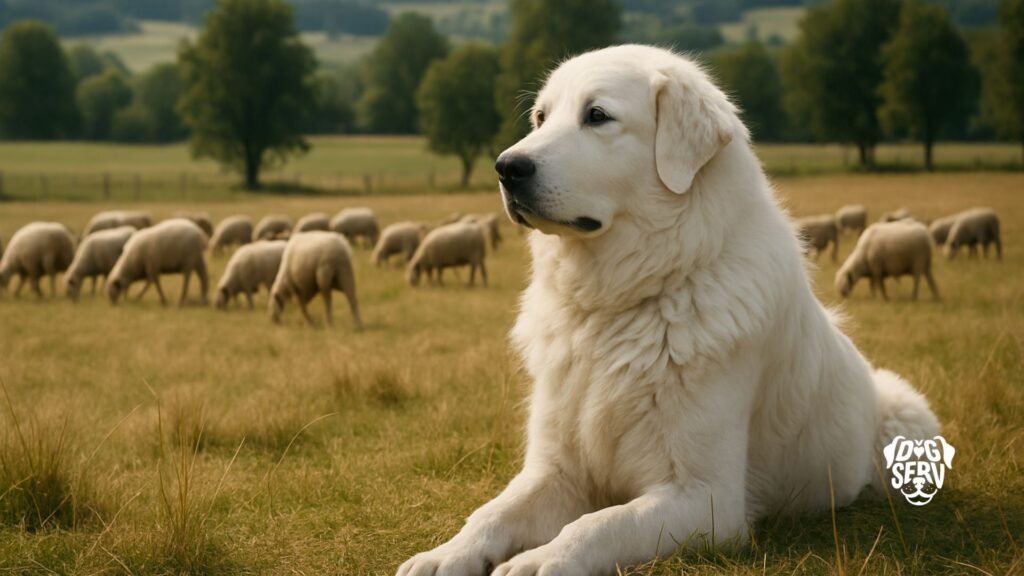
Working Dog Mentality vs. Companion Expectations
The disconnect between a breed’s original purpose and modern pet expectations can create training challenges. A Border Collie bred for herding might become frustrated with repetitive obedience exercises that don’t engage their problem-solving abilities. A Husky bred for endurance running might seem “stubborn” when asked to walk calmly on a leash.
Understanding your dog’s working heritage helps you provide appropriate mental and physical outlets. Breeds developed for independent work may respond better to training that incorporates their natural drives rather than suppressing them. A terrier might be more motivated by games that involve “hunting” hidden treats than by simple sit-stay exercises.
Adapting Training Methods to Breed Characteristics
Successful training with independent breeds often requires creativity and flexibility. Instead of demanding immediate compliance, these dogs may respond better to training that feels like a collaboration. Making training feel like a game or challenge rather than a series of commands can increase engagement.
Matching training techniques to breed-specific drives, energy levels, and natural behavioral tendencies produces more effective results. A scent hound might excel at nose work exercises, while a sight hound might prefer training that incorporates movement and chase games. Working with your dog’s genetics rather than against them creates a more enjoyable experience for both of you.
The Motivation Factor: Finding What Drives Your Dog
One of the biggest mistakes in dog training is assuming that all dogs are motivated by the same things. While food works for many dogs, others might be more driven by toys, play, social interaction, or even the simple satisfaction of a job well done. Successful training depends on identifying and utilizing the specific rewards that motivate your individual dog. When you find what truly motivates your dog, apparent stubbornness often disappears.
High-Value Rewards Beyond Food
Not every dog is food motivated, and even food-motivated dogs may not respond to every treat equally. Some dogs prefer soft, smelly treats, while others like crunchy textures. Age, health, and individual preferences all play a role in what your dog finds rewarding.
For dogs who aren’t food motivated, toys can be powerful motivators. A favorite squeaky toy, rope, or ball might generate more enthusiasm than any treat. Some dogs respond best to interactive play like tug-of-war or fetch as their primary reward. The key is finding what makes your dog’s eyes light up with excitement.
Social rewards shouldn’t be overlooked either. Many dogs find praise, petting, or even just attention highly motivating. Some dogs prefer calm, gentle praise while others respond better to enthusiastic, animated celebration. Environmental rewards like access to sniffing spots, doorways, or favorite resting places can also serve as powerful motivators for the right dog.
Reading Your Dog’s Preference Signals
Learning to read your dog’s body language and energy levels helps you identify their preferences. A dog who gets excited about a particular toy will show enthusiasm through their posture, tail movement, and focus. Observing and testing different reward types helps you discover what truly motivates your individual dog in various situations.
Pay attention to what your dog chooses during free time. Do they gravitate toward toys, seek out attention, or prefer to explore and sniff? These natural preferences provide clues about what might motivate them during training. A dog who loves to chase might respond well to thrown treats, while a dog who enjoys puzzle-solving might prefer interactive toy rewards.
Competing with Environmental Distractions
Your rewards need to be valuable enough to compete with whatever else is happening in the environment. A basic training treat might work well indoors but fail completely when competing with squirrels, other dogs, or interesting smells outdoors. This is where the concept of “high-value” rewards becomes important.
High-value rewards are things your dog finds irresistible. These might be special treats reserved only for training, a favorite toy that only comes out during training sessions, or activities your dog finds particularly enjoyable. The key is keeping these special rewards exclusive to training so they maintain their power to capture your dog’s attention even in distracting environments.
Communication Clarity: Ensuring Your Dog Actually Understands
Many training problems stem from unclear communication rather than true stubbornness. Dogs are excellent at reading context clues, which can mask incomplete learning. A dog might appear to know “sit” perfectly when you’re standing in the kitchen holding treats, but fail to respond when you give the same command while sitting on the couch. This indicates the dog has learned to respond to the entire context rather than the specific verbal cue.
Building Clear Command Associations
True understanding means your dog responds to the verbal cue regardless of your body position, location, or other environmental factors. Building this level of understanding requires systematic training that gradually removes contextual cues. Start by teaching commands in various positions, locations, and situations to ensure your dog is responding to your words rather than your body language or surroundings.
Consistency in your verbal cues is crucial. Everyone in your household should use the same words for the same behaviors. If one person says “down” and another says “lie down” for the same behavior, you’re creating confusion that can appear as selective obedience. Establishing strong, consistent connections between verbal cues and desired behaviors without relying on environmental context creates reliable responses.
Avoiding Context-Dependent Training
Context-dependent learning happens when dogs learn to perform behaviors only in specific situations. This is why a dog might be perfectly obedient during training sessions but seem to forget everything during real-world situations. To avoid this trap, vary your training locations, times of day, and environmental conditions from the beginning.
Training in varied environments with gradually increasing distractions helps dogs generalize commands. Start indoors with minimal distractions, then gradually move to more challenging environments like your backyard, quiet streets, and eventually busier areas. This progression helps your dog learn to respond regardless of what’s happening around them.
Testing True Understanding vs. Environmental Prompts
Periodically test your dog’s understanding by changing variables in your training. Give commands from different positions, in new locations, or when your dog isn’t expecting them. If your dog only responds when you’re standing in a specific position or location, they haven’t fully learned the command yet.
Video recording your training sessions can reveal subtle body language or environmental cues you might not realize you’re giving. Many owners discover they’re unconsciously providing visual signals that their dogs rely on. Identifying and gradually removing these extra cues helps build genuine command understanding.
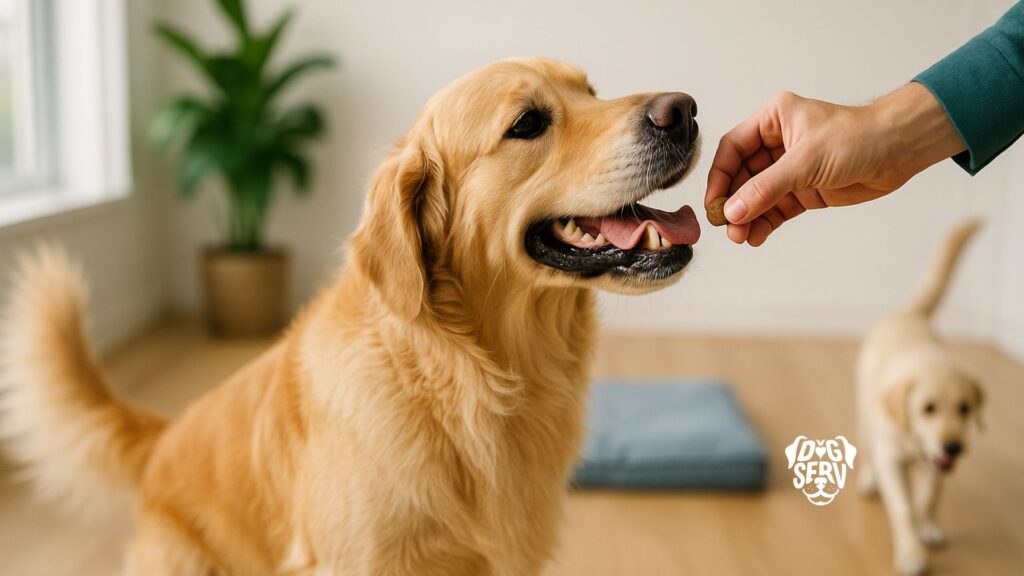
Positive Reinforcement Strategies That Work
Science consistently shows that positive reinforcement creates more reliable, enthusiastic compliance than punishment-based methods. Reward-based approaches build trust and engagement while punishment often creates anxiety and avoidance behaviors. When dogs associate training with good things happening, they become eager participants rather than reluctant followers.
Timing and Marking for Maximum Impact
The timing of your rewards can make or break your training success. Dogs learn through associations, and these associations are strongest when rewards immediately follow the desired behavior. Using clickers, marker words like “yes,” and precise timing helps clearly communicate which behaviors earn rewards.
A marker signal bridges the gap between behavior and reward, allowing you to mark the exact moment your dog does something right, even if you can’t deliver the actual reward immediately. This precision helps dogs understand exactly what they did to earn the reward, speeding up the learning process and reducing confusion.
Consistency in your marker signal is important. Whether you use a clicker, a word like “yes,” or another sound, use it the same way every time. The marker should always be followed by a reward, at least during the learning phase, to maintain its effectiveness.
Jackpot Rewards and Variable Reinforcement
Once your dog has learned a behavior, you can make it even stronger by using unpredictable reinforcement schedules. Instead of rewarding every single correct response, occasionally give “jackpot” rewards for exceptional performances. These extra-special rewards and unpredictable reinforcement schedules help maintain high engagement and prevent habituation.
A jackpot might be multiple treats, an extended play session, or access to something your dog really wants. The unpredictability keeps your dog engaged and hopeful, similar to how slot machines keep people playing. This doesn’t mean being stingy with rewards, but rather occasionally surprising your dog with something extra special.
Building Training Momentum with Small Wins
Starting with behaviors your dog already knows or can easily perform builds confidence and enthusiasm. Beginning with easy successes creates positive momentum before progressing to more challenging behaviors and environments. This approach is particularly important for dogs who have had negative training experiences or seem reluctant to engage.
Success breeds success in dog training. A dog who experiences frequent wins during training sessions will approach future training with optimism and eagerness. This positive attitude makes learning new behaviors much easier and faster.
Environmental Management and Distraction Proofing
Your dog’s environment plays a huge role in their ability to focus and respond to commands. Environmental factors dramatically impact a dog’s ability to concentrate and comply, requiring systematic approaches to distraction training. Managing these factors strategically can mean the difference between success and frustration in your training efforts.
Creating Optimal Learning Environments
Start training in the most boring, distraction-free environment possible. This might be a quiet room in your house with no other people, pets, or interesting smells. As your dog masters behaviors in this controlled setting, you can gradually add complexity and distractions.
The goal is to set your dog up for success at each stage. If you jump too quickly from training in your living room to training at a busy dog park, you’re likely to see what appears as stubbornness but is actually overwhelm. Designing training spaces that minimize distractions while gradually introducing real-world challenges helps skills develop systematically.
Stress Recognition and Management
Stress significantly impairs learning and can make even well-trained dogs appear unresponsive. Signs of stress include excessive panting, drooling, inability to take treats, repetitive behaviors, or shutting down completely. When dogs are stressed or highly distracted, their ability to process information and respond to commands decreases significantly.
If you notice stress signals during training, take a break or move to an easier environment. Pushing through stress rarely leads to good outcomes and can create negative associations with training. Instead, adjust the difficulty level until your dog can succeed, then gradually increase challenges as their confidence grows.
Progressive Distraction Training
Distraction-proofing should follow a systematic progression. Start with very mild distractions and gradually increase intensity as your dog demonstrates reliable responses. This might mean starting with a family member walking by, then progressing to someone dropping a toy, and eventually working around other dogs or exciting outdoor environments.
Step-by-step methods for gradually increasing environmental challenges while maintaining reliable command response create lasting behavioral changes. Each step should be small enough that your dog can still succeed, but challenging enough to build skills. If your dog fails at a particular level, drop back to an easier challenge until they’re confident again.
Training Session Structure for Maximum Effectiveness
How you structure your training sessions can significantly impact your success. Dogs have limited attention spans, and their ability to focus varies based on age, breed, and individual personality. Designing training sessions that account for canine attention spans, energy levels, and learning patterns prevents frustration and maintains engagement.
Optimal Session Length and Frequency
Short, frequent sessions typically produce better results than long, infrequent ones. Five to ten-minute sessions often generate better outcomes than longer training periods, especially for easily distracted dogs. This prevents mental fatigue and keeps training fun and engaging.
Multiple short sessions throughout the day can be more effective than one long session. You might do a quick three-minute session before meals, another during a commercial break, and one more before bedtime. This frequent practice helps solidify learning without overwhelming your dog.
Young puppies and senior dogs may need even shorter sessions, while some adult dogs can handle slightly longer periods. Pay attention to your dog’s body language and engagement level to determine the optimal session length for your individual pet.
Ending on High Notes
Always try to end training sessions with a behavior your dog can perform successfully. Concluding training sessions with successful behaviors maintains positive associations with training. This means that even if you’re working on a challenging new skill, finish with something your dog knows well.
Ending positively ensures your dog looks forward to the next training session rather than dreading it. If you’re struggling with a particular behavior, take a step back and practice an easier version, then end there. You can return to the more challenging version in the next session when both you and your dog are fresh.
Incorporating Mental Stimulation and Enrichment
Mental exercise can be just as tiring as physical exercise for dogs. Using puzzle toys, scent work, and problem-solving activities helps tire the mind and improve focus during formal training. A mentally tired dog is often more ready to focus on training than one who is full of pent-up energy.
Consider incorporating training into your dog’s daily enrichment activities. Hide treats around the house and have your dog “find them” on command, or use puzzle feeders that require your dog to work for their meal. These activities reinforce training concepts while providing mental stimulation.
Troubleshooting Common Training Roadblocks
Even with the best intentions and methods, training challenges can arise. Understanding common roadblocks and their solutions helps you address issues before they become ingrained problems. Identifying and addressing specific issues that create the appearance of stubbornness often reveals underlying problems that need attention.
When Dogs “Shut Down” During Training
Some dogs respond to training pressure or confusion by shutting down completely. This might look like a dog who becomes still, won’t take treats, or seems to “zone out” during training sessions. Recognizing and addressing anxiety, overwhelm, or learned helplessness helps dogs become responsive to cues again.
Shut-down behavior often indicates that training has become too stressful or confusing. The solution is usually to reduce pressure, simplify expectations, and rebuild positive associations with training. This might mean going back to very basic exercises or taking a complete break from formal training while working on building your relationship through play and positive interactions.
Overcoming Negative Command Associations
If your dog has learned that certain commands predict unpleasant experiences, they may develop selective hearing for those specific cues. A dog who has been called to come and then immediately put in a crate might start ignoring recall commands. Rehabilitation strategies for commands that have become associated with punishment or negative outcomes require patience and systematic counter-conditioning.
Fixing negative associations often means temporarily retiring the poisoned command and building a new cue for the same behavior. You can teach “here” instead of “come” while making sure the new command only predicts good things. Once your dog responds enthusiastically to the new cue, you can gradually reintroduce the old one if desired.
Dealing with Selective Hearing
When dogs obey some commands consistently but ignore others, it usually indicates differences in motivation, understanding, or associations. Selective hearing often points to motivation or understanding issues rather than true defiance. Analyzing which commands work and which don’t provides clues about what needs to be addressed.
Commands that work well usually have clear associations, adequate motivation, and positive outcomes. Commands that are ignored might be under-rewarded, poorly understood, or associated with negative experiences. Treating each problem command as a separate training challenge allows you to address the specific issues affecting each behavior.
Advanced Techniques for Persistent Training Challenges
Some dogs require creative approaches that go beyond basic training methods. Specialized approaches for dogs who continue to struggle with traditional training methods often involve working with rather than against natural behavior patterns. These techniques can break through persistent training plateaus and create breakthrough moments.
Capturing Natural Behaviors vs. Luring
Instead of trying to force behaviors, capturing involves rewarding behaviors your dog naturally performs. If your dog naturally sits when waiting for something, capture that moment with a marker and reward. Using the dog’s natural behavior patterns as training opportunities rather than fighting against their instincts often produces faster results.
This approach works particularly well for independent breeds who may resist being physically manipulated into positions. A dog who dislikes being pushed into a down position might readily offer the behavior if you wait for naturally occurring downs and reward them consistently.
Chain Training for Complex Behaviors
Complex behaviors can be broken down into smaller, manageable components that are taught separately and then linked together. Breaking down complicated commands into smaller, manageable steps helps build toward the final desired behavior systematically. This approach prevents overwhelm and allows you to identify exactly where in the sequence your dog is struggling.
For example, a reliable recall can be broken down into attention, turning toward you, starting to move, maintaining direction, and arriving at your location. By training each component separately, you can strengthen weak links in the chain and build a more reliable overall behavior.
Counter-Conditioning and Desensitization
Some training challenges stem from emotional reactions rather than lack of understanding. A dog who becomes anxious around other dogs might be physically capable of sitting on command but too stressed to respond. Counter-conditioning changes emotional responses to triggers that cause avoidance or resistance during training sessions.
This process involves changing your dog’s emotional response to specific situations by pairing them with very positive experiences. A dog who shuts down around distractions might need to experience those distractions at a distance while receiving amazing treats, gradually building positive associations before expecting any training responses.
Building Long-Term Training Success and Relationship
Sustainable training success requires more than just teaching individual behaviors. Creating lasting training habits that maintain progress while strengthening the human-dog bond requires ongoing attention to consistency, adaptation, and relationship building. The goal is a partnership based on mutual understanding and respect.
Maintaining Consistency Across Family Members
One of the biggest challenges in dog training is getting everyone in the household on the same page. When all family members use the same cues, rewards, and expectations, dogs learn faster and show more reliable responses. Mixed messages from different family members can create confusion that appears as selective obedience.
Hold family meetings to discuss training protocols and make sure everyone understands the current rules and commands. Consider posting reminder cards with the exact words and hand signals you’re using for each command. Consistency in timing, rewards, and expectations helps dogs understand what’s expected, regardless of who is giving the command.
Adapting Training as Dogs Mature
Training needs change throughout a dog’s life. A puppy’s training focuses on basic life skills and socialization, while an adult dog might need more advanced behaviors or behavior modification. Senior dogs may require adjustments due to physical changes or cognitive shifts.
How training needs and approaches change from puppyhood through senior years requires ongoing assessment and modification. What worked for your energetic young adult dog might need adjustment as they age and their energy levels or physical abilities change. Staying flexible and responsive to your dog’s changing needs maintains training effectiveness throughout their lifetime.
Recognizing and Celebrating Progress
Training progress isn’t always linear, and small improvements deserve recognition. Developing realistic expectations and acknowledging incremental improvements rather than expecting perfection maintains motivation for both dogs and owners. Some days will be better than others, and that’s completely normal.
Keep a training journal to track progress over weeks and months rather than day-to-day. This long-term perspective helps you see patterns and improvements that might not be obvious in individual sessions. Celebrating small wins keeps both you and your dog motivated to continue working together.
Age-Specific Training Considerations
Training approaches may need adjustment based on your dog’s age and developmental stage. Puppies have different attention spans and learning capabilities than adult dogs, while senior dogs may face physical or cognitive challenges that require modified techniques.
Puppy training focuses on basic socialization, house training, and simple commands using very short, positive sessions. Young dogs may appear “stubborn” when they’re actually dealing with normal developmental challenges like teething, growth spurts, or hormonal changes.
Adolescent dogs, typically between six months and two years old, often seem to forget previously learned behaviors as their brains develop. This phase requires patience and consistency as dogs work through normal developmental rebellion, similar to human teenagers.
Senior dogs may need slower-paced training, more frequent breaks, and adjustments for physical limitations. What appears as stubbornness might actually be hearing loss, vision changes, or joint discomfort that makes certain behaviors difficult or uncomfortable.
When to Seek Professional Help
Sometimes training challenges exceed what owners can address alone. Recognizing when training challenges require intervention from certified dog trainers or veterinary behaviorists prevents problems from becoming more serious. Professional help can provide new perspectives and specialized techniques for persistent issues.
Consider professional assistance if your dog shows signs of fear, aggression, or anxiety that interfere with training. Resource guarding, separation anxiety, or reactivity to other dogs or people often require specialized behavior modification protocols. Additionally, if you’ve been working on the same issue for months without progress, a fresh set of trained eyes can often identify solutions you might have missed.
Look for certified trainers who use positive reinforcement methods and have experience with your specific challenges. Avoid trainers who rely heavily on punishment or dominance-based techniques, as these approaches often worsen problems that appear as stubbornness.
Technology and Training Tools That Help
Modern training tools can support positive reinforcement approaches when used properly. Clickers remain one of the most effective training tools, providing precise timing for marking desired behaviors. Treat pouches keep rewards easily accessible during training sessions, while long lines allow safe practice of commands like recall in open areas.
Puzzle toys and food-dispensing toys provide mental stimulation that can tire dogs before training sessions, making them more focused and ready to learn. These tools also reinforce problem-solving skills that transfer to formal training situations.
However, avoid tools that rely on punishment or discomfort, such as shock collars or prong collars, especially for dogs who already seem reluctant to engage in training. These tools often increase anxiety and avoidance behaviors that can worsen apparent stubbornness.

Frequently Asked Questions About Training Stubborn Dogs
Q: Is my dog being stubborn, or do they not understand? A: Most apparent stubbornness stems from confusion, lack of motivation, or environmental distractions rather than willful defiance. Test your dog’s understanding by trying the command in different locations and situations. If they only respond in specific contexts, they need more practice generalizing the behavior.
Q: Why does my dog obey at home but ignore me in public? A: This indicates the commands haven’t been properly generalized to different environments. Dogs often learn behaviors in context, so a command learned in your kitchen might not transfer to the dog park. Practice in gradually more distracting locations to build reliable response patterns.
Q: Should I use corrections or punishment for stubborn behavior? A: Punishment often increases anxiety and creates more resistance rather than improving compliance. Positive reinforcement builds willing cooperation and strengthens your relationship with your dog, leading to more reliable long-term results.
Q: How long should I expect training to take with an independent breed? A: Independent breeds may take longer to show consistent results, but patience and consistency with positive methods typically yield more reliable outcomes than rushing with corrections. Some breeds require creative approaches that work with their natural instincts rather than against them.
Q: My dog seems to understand but chooses not to obey. What should I do? A: This usually indicates the reward isn’t valuable enough to compete with other interests, or the dog has learned that non-compliance doesn’t have meaningful consequences. Adjust your motivation strategy by finding higher-value rewards and ensuring consistency in your expectations. If your dog gets what they want anyway without obeying, they have no reason to change their behavior.
Q: How do I know if my dog needs professional training help? A: Consider professional assistance if your dog shows signs of fear, aggression, or anxiety that interfere with training, or if you’ve been working on the same issues for months without progress. Certified trainers can provide fresh perspectives and specialized techniques for persistent challenges.
Q: Can I train an older dog who has been “stubborn” for years? A: Absolutely. While established patterns may take longer to change, dogs of any age can learn new behaviors with patience and appropriate methods. Older dogs often respond well to positive training approaches once you identify what motivates them.
Building Your Dog’s Training Success Story
Understanding that apparent stubbornness often masks communication breakdowns, motivation mismatches, or environmental challenges empowers you to become your dog’s most effective advocate and teacher. The journey from frustration to partnership begins when you shift from asking “Why won’t my dog obey?” to “What is my dog trying to tell me?” This fundamental change in perspective opens doors to training approaches that work with your dog’s natural instincts and personality rather than against them.
Remember that every dog is an individual with unique needs, preferences, and ways of processing information. What works for your neighbor’s Golden Retriever might not work for your independent-minded Husky, and that’s perfectly normal. The investment you make in understanding your dog’s specific communication style, motivation triggers, and learning patterns will pay dividends in a stronger relationship built on mutual respect and understanding.
At DogServ, we understand that the most rewarding training relationships develop when owners learn to see the world through their dog’s eyes and adapt their teaching methods accordingly. Your willingness to look beyond labels like “stubborn” and dig deeper into what your dog really needs demonstrates the kind of thoughtful, empathetic approach that transforms both dogs and their families. Every challenge you work through together strengthens the bond between you while building skills that last a lifetime.
Start implementing these science-based approaches today by observing your dog’s natural preferences, testing different motivation strategies, and creating training environments that set both of you up for success. Trust in the process, celebrate small victories along the way, and remember that patience and consistency with positive methods create lasting behavioral changes that punishment-based approaches simply cannot match.
When you combine clear communication, appropriate motivation, environmental awareness, and a genuine understanding of your dog’s individual needs, you create the foundation for a partnership based on cooperation rather than compliance. Your dog’s eager participation in training sessions isn’t just about following commands. It’s a reflection of the trust, respect, and positive relationship you’ve built together through patient, science-based training methods.



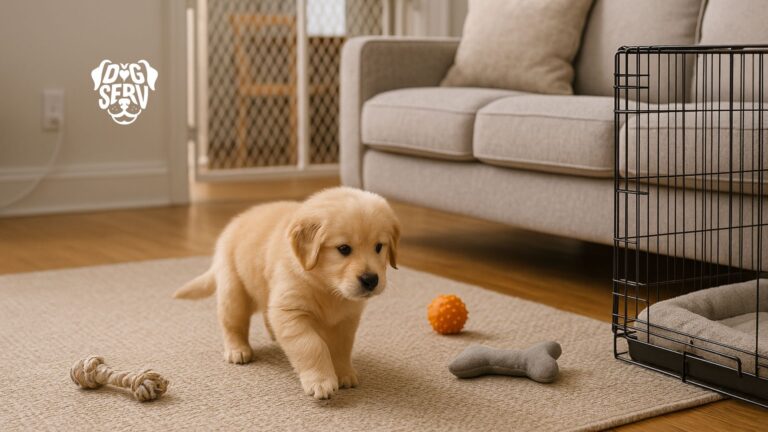
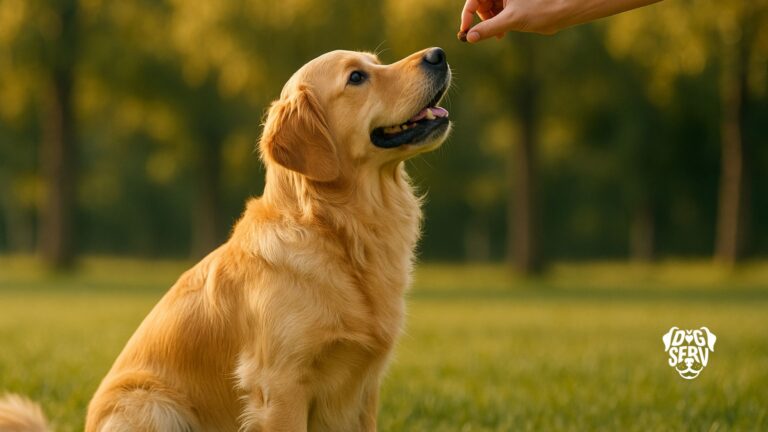

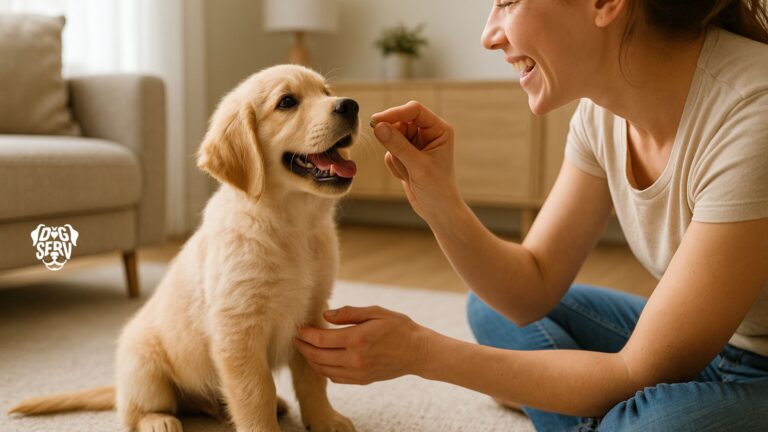
Calvin Hewitt is the primary author and driving force behind DogServ, bringing over 27 years of business expertise and 7 years of specialized digital marketing experience to the dog service industry. As the founder of Web Leveling and architect of DogServ’s evolution from a simple directory to a comprehensive one-stop shop for dog lovers, Calvin has created highly performing dog training websites in competitive markets, developed popular applications like “Can My Dog Eat?” and “Puppy Planning Checklist,” and generated thousands of monthly page views with his dog service content. Based in the Houston area but serving dog lovers and service providers nationally and internationally, Calvin works alongside a dedicated team of seven professionals, combining analytical rigor from his banking and energy industry background with a genuine passion for connecting dog owners, dog lovers, and service providers through quality content, innovative applications, and trusted recommendations.